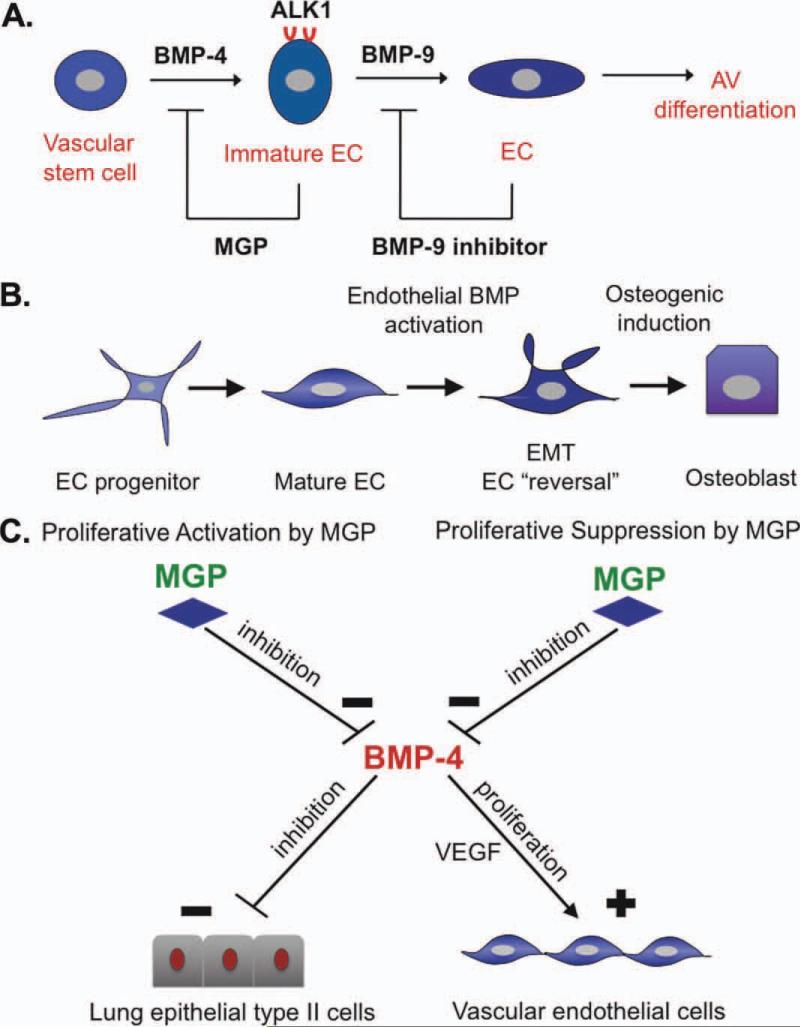Figure 1.
Schematic diagrams of BMP involvement in vascular processes. (A): A two-step model of the proposed roles of BMP-4 and BMP-9 in EC differentiation. BMP-4 stimulates expression of the ALK1 receptor in immature ECs, which then become responsive to BMP-9, which allows for further proliferation and AV differentiation [8, 33, 34]. At each step, a BMP antagonist may be induced to limit the BMP stimulation. (B): Potential reversal of cell differentiation in ECs in the setting of increased BMP activity in vascular disease such as atherosclerosis (hyperlipidemia) or diabetic vasculopathy (hyperglycemia), with osteogenic induction by BMP-2 or other factors [12, 13, 16]. (C): Reciprocal regulation of proliferation in epithelial type II lung cells and vascular ECs. MGP promotes proliferation of lung cells but limits that of ECs. BMP-4 has the opposite effect. Thus, an increase in MGP will favor lung cell proliferation, whereas a decrease in MGP will favor EC proliferation [11]. Abbreviations: ALK1, activin-like kinase receptor 1; AV, arteriovenous; BMP, bone morphogenetic protein; EC, endothelial cell; EMT, endothelial-mesenchymal transition; MGP, matrix Gla protein; VEGF, vascular endothelial growth factor.

